-
Posts
161 -
Joined
-
Last visited
Content Type
Profiles
Forums
Developer Articles
KSP2 Release Notes
Bug Reports
Posts posted by duckunlimited2
-
-
Yeah tornadoes are bad, but have you guys ever experienced a hurricane. Its like a tornado but gigantic. Plus it can spawn tornadoes. (I\'m from Florida)
-
Wait, SUN!?!?! I thought it was called Kerbol.
-
Your very welcome Rico88.

-
Hey, do me a favor guys and stop trying to download KSP for 2 minutes. I\'m trying to download the game without it being all corrupted. (some people are so insensitive to others. =P)
Here goes try number 6
-
I\'ll be sure to download these parts soon, I just want to clean out some unused parts to reduce clutter. I was quite surprised to see my guide here as well. 8) However, I did have one teeny-weeny little mistake that made the high-to-low to orbit miss by half an orbit (oops). I did fix it so you do want to update that.
Link to guide:http://kerbalspaceprogram.com/forum/index.php?topic=7138.0
-
Yay, more landing legs! You\'re, by far, my most favorite modder so far.

-
-
I have no Idea, Honestly! 8)
-
Pair of Skis, can you not count?
-
Challenge Accepted! I just wished I thought of this sooner.

-
Sorry Rico, I got the High-To-Low Orbit wait time wrong. You should wait for your craft to do 1 & 3/4 orbits like the Low-To-High, (I think that\'s how you end up being half orbit distances away). Yeah, I never tested that specific method until just a few moments ago. It\'s alot easier to test it with .14 released. I fixed the mistake in the guide.
I think the major thing that\'s messing you up is not factoring the planet\'s radius in your calculation. Altitude is not the same as orbital radius.
Ex: You have the target satellite up at 300,000m in Kerbin Orbit. To find the altitude your craft should be, add 600,000m (kerbin\'s radius) with the target satellite\'s altitude. 600,000+300,000=900,000. Then you multiply it by 1.59. You should get 1431000. What you have now is Orbital radius. You want altitude, so subtract Kerbin\'s radius from the number to get your altitude. 1431000-600000=831000m. So, to rendezvous with a satellite 300,000m high, you need to get your craft up at an altitude of 831000m first.
I\'ll see if I can get a video up sometime soon.
Cheers!
-
Well, honestly you did an superb job. Basically, you need a bit of finesse when your that close. When distances are so big, its okay to go full burn and throttle at its highest, however, the smaller the distance is, the more gentle you need to be in the controls. At distances less than thousand, you basically need an extremely gentle touch.
So, assuming that your going the same speed with 500 meters between the two crafts, I\'d increase/decrease your speed by 10-15m/s (use the skip manuever, and make sure apopasis is only a 10-50 meter deviation). As it gets closer, you want to incrementally burn to slow down the speed at which they close. RCS is a great for this scenario thanks to its gentleness and versatility of direction at which to burn in any orientation.
500 meters, to me, is just at the cusp of the viable distance to do docking maneuvers. I strongly suggest you send a rocket out in orbit, decouple a target part, and play around with RCS, watching how each little push affects the relative position of the craft and target part and the speed the move away from each other. As you get more comfortable, push your craft farther and farther away and attempt to get back to it. This exercise should give you a better idea on how much finesse you need to gently close those 500 meters.
I don\'t know any way to lock the cameras, but the best view is a side view of your craft and satellite. This way, you get a better vantage point to judge its speed and vector relative to your craft.
By the way, I was able to get 70meters away from the satellite. A little RCS docking maneuvers and they were practically hugging!
Cheers!
-
Here\'s my attempt:

70 meters away from the satellite. Done without RCS

-
Simple challenge, difficult to execute. Launch a satellite in near kerbin, circular obit. Launch another craft (rocket, space plane, etc) and try to get it to meet up with the satellite. Basically, your trying to get close enough to the craft so you can dock, just like how the space shuttles met up with the spacestation.
Any parts are allowed, just make sure they\'re reasonable.
the closest distance is the winner. Please screen capture the satellite distance as proof.
Make sure both the satellite and the craft are both going the same direction. Making them go opposite directions and screen capturing right before collision is not acceptable.
Good luck y\'all
Edit: well looking around the forums and seeing the many pics at successful attempts (and seeing how uranium already got two satellites nose to nose making him the winner) lets make this more difficult:
Get a target satellite in orbit and get as many other craft to rendezvous with it. They must be within 300 meters of the target satellite in order to count. Highest number of junk around your target satellite wins and none of the craft can be debris.
Oh, to help you guys out, I have a guide that will definitely help. With it, I have rendezvoused with Mun, and have safely got back to Kerbin after a Kerbol mission. Link:http://kerbalspaceprogram.com/forum/index.php?topic=7138.0
-
I don\'t have a video but I do have pictures. http://kerbalspaceprogram.com/forum/index.php?topic=7317.msg105854#msg105854
In this example, I\'m trying to do a Challenge where I go into Kerbol Orbit and Come back. First try was a bust. The second was more successful. My guide proves very valuable in getting back to Kerbin.
-
Hey, with version .14 about to come out (which means we get extra kerbonaughts) shouldn\'t you move your probekit parts out of the crew section?
-
Excellent! This would be helpful. Nice work.
-
@gabyalufix: Thanks! If your talking about the one with the single radio dish, that is a two-meter satellite destined for interplanetary orbit. The rocket is an interplanetary shuttle designed to ferry Kerbals between two planets.
By the way, I love your miscellanea parts. I\'m definitely going to use them a lot!
-
Wouldn\'t it be more profitable if you don\'t tell us these warnings?
Anyway, I just pre-ordered. It\'s a pleasure doing business with Squad.

-

The Kerbal Space Center is deciding who their primary pilot should be on their missions. Many, including Jeb have applied. They need to be able to land a lander correctly in order to be considered as being a good choice.
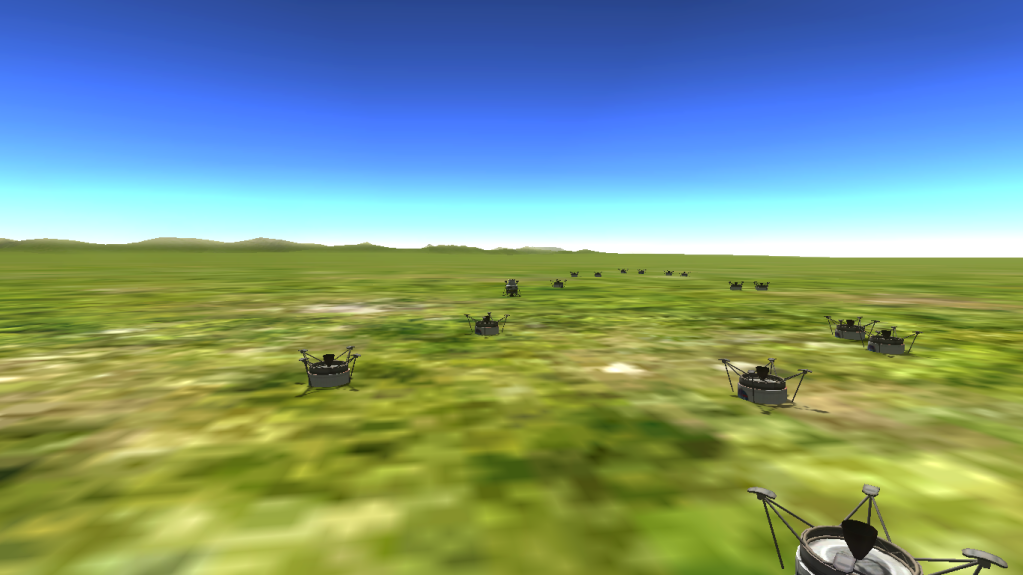
(Jeb\'s lander is the one in the middle that is standing upright. It was decided just then that he\'d be their pilot. 8)
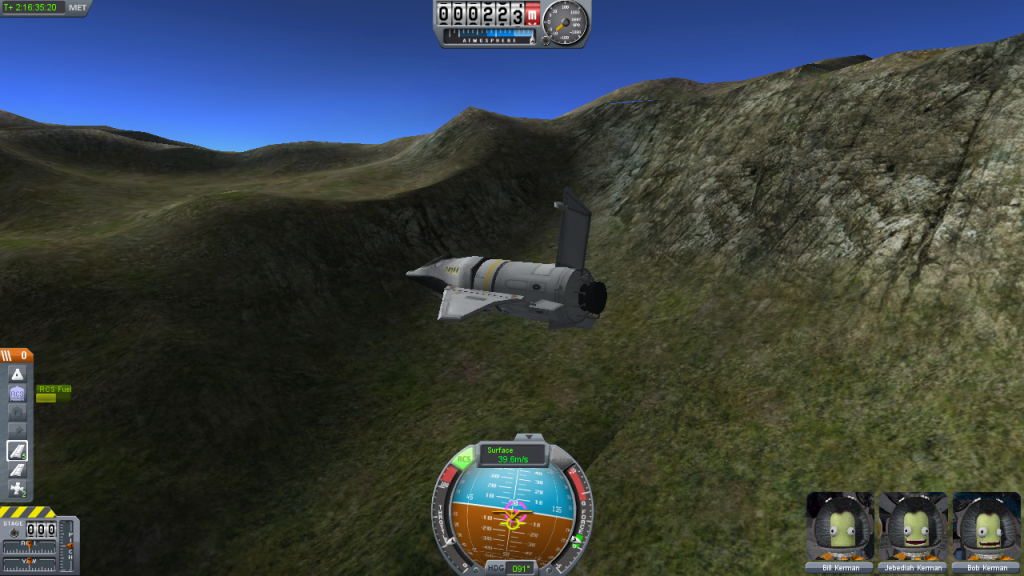
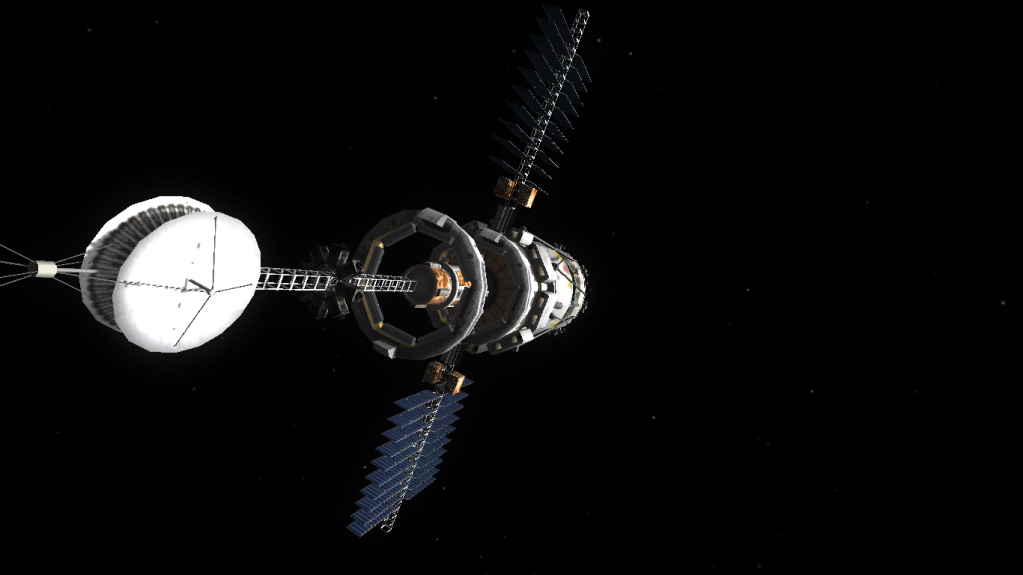
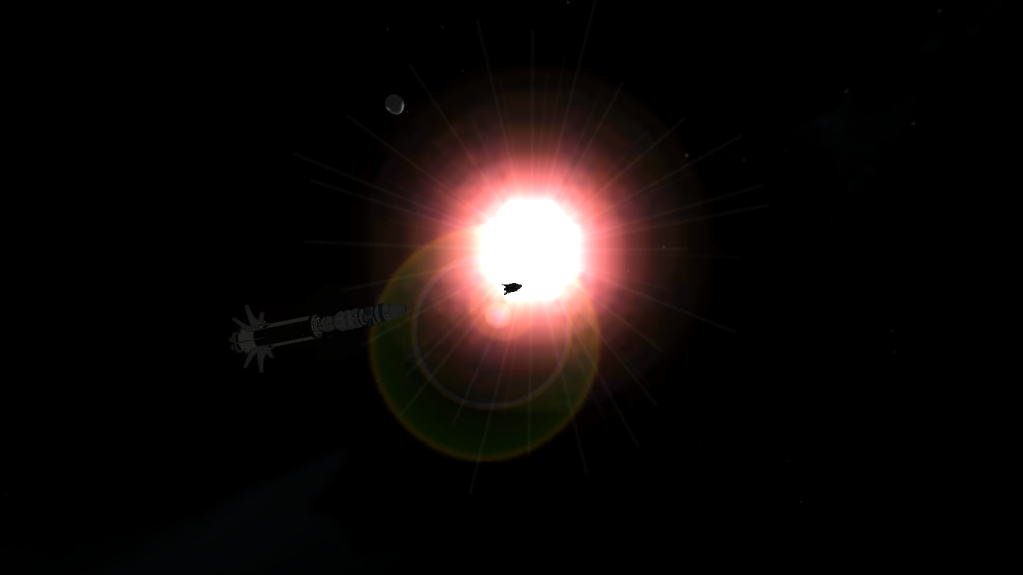

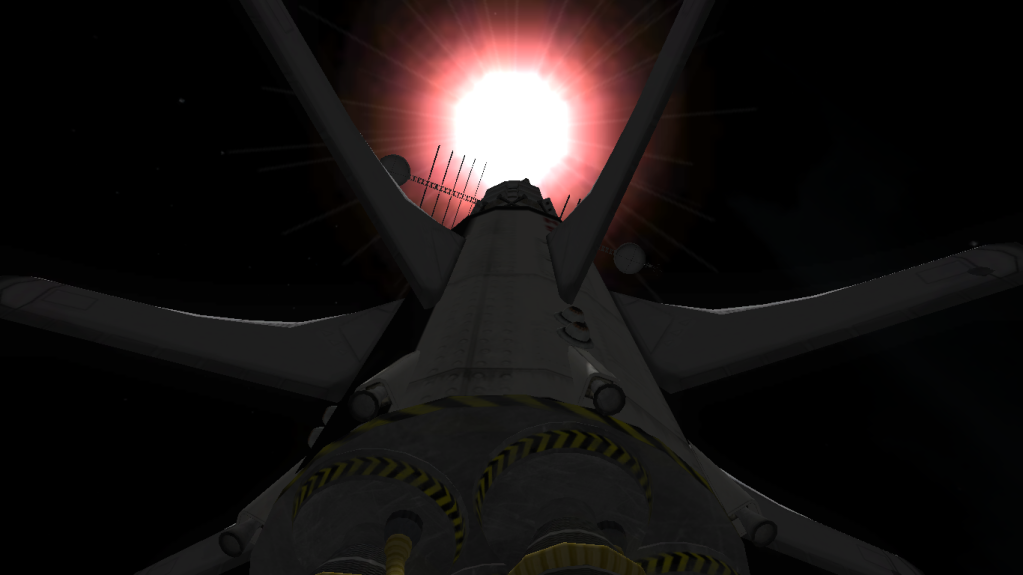

-
That would be more difficult. Orbital periods are directly related to their orbital radius. If you are at a certain altitude, your orbital period will be quite specific. It\'s easy to compare them that way and get them to match up. However, a planet\'s spin isn\'t related to the planet\'s radius so comparing would be difficult. Plus atmospheric drag makes it even more complex.
But there should be a way and I will find it .

-
After many days of researching, brainstorming, testing, and general figuring out of stuff, I have designed a Easy-to-follow step-by-step process that will get any two satellites to meet up in orbit; and don\'t worry, there is very minimal math required as per designed.
There are 2 versions of my process: Low-to-High Transfer and High-to-Low Transfer. Both assume that the satellite you want to meet is in a perfect circular orbit and that the spacecrafts orbit is in the same plane as the satellite.
Low-to-High Transfer
1) Set your spacecraft in a circular orbit that has an orbital radius of 63% compared to the orbital radius of the satellite you want to meet up.
- ex: if the satellite you want to meet has an orbital radius of 12,000,000m, you want your craft to have an orbital radius of 7,560,000m or 63% of the meet-up satellite\'s orbital radius.
2) Wait for the satellite, your craft, and the central orbiting body to position themselves, in that order, in a perfectly straight line.
3) Wait for your spacecraft to complete 1 & 3/4 orbits
4) Burn in the direction of travel to raise your Apoapsis up to the same level of orbit as that of the Meet up satellite
-ex: if the meet up satellite has an orbital radius of 12,000,000m, raise apoapsis to that same No.
- For optimal results, do your burn a little later or after you hit 3/4 of that last orbit in step 3
5) wait again for your spacecraft to reach the other side of its orbit at apoapsis
- From here, your spacecraft should meet up with the satellite
6) Burn in the direction of travel to make a circular orbit that matches with the satellites circular orbit
7) Congratz yourself for a job well done!
High-to-Low transfer
1) Set your spacecraft in a circular orbit that has an orbital radius of 159% compared to the orbital radius of the satellite you want to meet up.
- ex: if the satellite you want to meet has an orbital radius of 7,560,000m, you want your craft to have an orbital radius of 12,000,000m or 159% of the meet-up satellite\'s orbital radius.
2) Wait for your craft, the satellite,and the central orbiting body to position themselves, in that order, in a perfectly straight line.
3) Wait for your spacecraft to complete 3/4 orbits
4) Retrograde to lower your periapsis down to the same level of orbit as that of the Meet up satellite
-ex: if the meet up satellite has an orbital radius of 7,560,000m, lower periapsis to that same No.
- For optimal results, do your burn a little early
5) wait again for your spacecraft to reach the other side of its orbit at periapsis
- From here, your spacecraft should meet up with the satellite
6) retrograde to make a circular orbit that matches with the satellites circular orbit
7) Congratz yourself for a job well done!
Do to the fact that while your doing it, you are approximating, you may find that your rendezvous may not be stellar and may find yourself a little too far ahead or behind for a docking attempt. If you find yourself in this situation, follow these correctional maneuvers:
Correctional Rule of Thumbs
To speed your craft up to meet up with the satellite, Retrograde and lower periapsis just slightly. For every orbital period that passes, you will gain on the satellite. The more you lower periapsis, the more you gain on the satellite per orbital period. Once you have sufficiently caught up, bring periapsis back up to to make a circular orbit again at apoapsis.
To slow your craft down to meet up with the satellite, Prograde and raise apoapsis just slightly. For every orbital period that passes, the satellite will gain on you. The more you raise apoapsis, the more the satellite gains on you per orbital period. Once you have sufficiently caught up, bring apoapsis back down to to make a circular orbit again at periapsis.
Seems illogical, but when you lower/raise an orbit, your velocity doesn\'t change much. What changes significantly is the distance you need to cross to complete an orbit. High orbit = more distance = longer orbital period. Low orbit = less distance = shorter orbital period.
This maneuver is best used when you cannot see the satellite\'s distance indicator in the flight screen. It\'s a good way to get the distance indicator into view
The Skipping Maneuver
This maneuver is best used when you can see the satellite\'s distance indicator.
To slow down yourself in order for the satellite to catch up, retrograde a bit to lower your speed. Watch the satellite\'s distance indicator in order to help control the rate at which the satellite closes. As the satellite gets closer, prograde in increments to gently slow the rate the two crafts closes until their in a reasonable distance away from each other to perform docking maneuvers. Once achieved, you can fix your orbit, or attempt a dock.
Important: After you retrograded, your craft, by laws of physics, will start to lose altitude. In order to keep altitude under control, you want to thrust upwards, away from the celestial body your orbiting (do this by placing your indicator on the north pole of your navball and thrust). This type of burn will raise the front half of your orbit, and lower the back half of your orbit without changing your orbital velocity. Periodically thrust up in order to keep altitude (hence the term 'skip'). I find it best to use the main engine to maintain altitude and RCS thrusters to slow the rate of closure.
In order to speed yourself up to catch up with the satellite, prograde instead and periodically retrograde as you get closer. To keep altitude in check thrust straight down (south pole on navball). I think you get the picture.
Aligning A Tilted Orbit
Right after the pivot point (where your two craft\'s orbits meet), you want to thrust in the direction of the satellite\'s orbit. (on the navball, you should be thrusting in between the yellow markers.
With this guide, you now have the ability to create space stations, meet up with other planets, and other things you could imagine. Enjoy
Notes:
you really want both crafts apoapsis and periapsis to be extremely close to the same spot and extremely close to the same altitude. It makes things alot easier.
HarvestR is planning on implementing a feature in the game to help with rendezvous. Since it will be more precise and be a bit more versatile, it probably would outdo this guide. However, it won\'t be released probably in the next few patches.
Be sure to check out WX_Echo\'s Orbital Mechanic calculator. It\'s quite a good tool to help with orbital matters.
Forgot to mention: Altitude and orbital radius aren\'t the same thing. To find orbital radius, take the altitude and add that with the planets radius. (I made that mistake a few times. I\'m just trying to warn you, lol!)
-
I like it. Can you mod the SS Dolphin too? that be awesome. 8)
-
So many great videos today! Great job, really enjoyable!



I need help for docking
in KSP1 Gameplay Questions and Tutorials
Posted
i got that guide for rendezvousing right here, Cepheus http://kerbalspaceprogram.com/forum/index.php?topic=7138.0
You know, I have to say (Warning! Rant Ahead), that synchronize orbit guide is really bugging me. It\'s basically the same maneuver as my correctional rule of thumbs segment in my guide. Also, if you compare the two methods, the sync guide method can take a hell of a time (more than is necessary) before you actually rendezvous. Unlike his, mine is based off of more than a concept. It\'s based on reliable calculations that ( if timing is inhumanely perfect) will get the 2 craft to crash together. (End of Rant! you can open your eyes now)
I give him credit for better explaining on how to fix a tilted axis though.